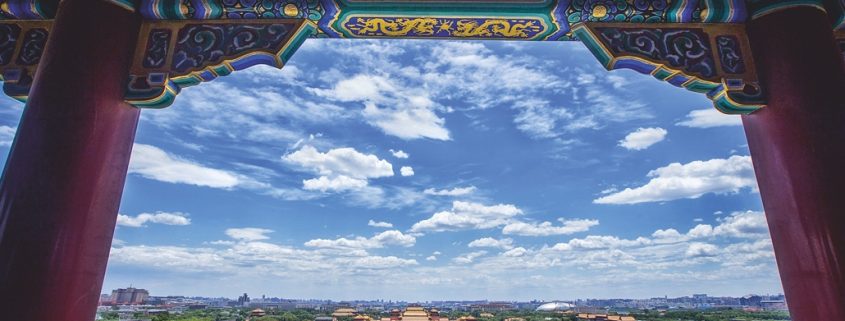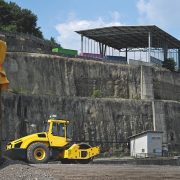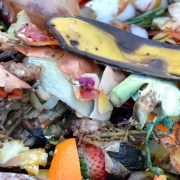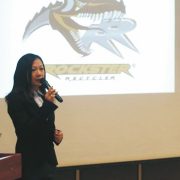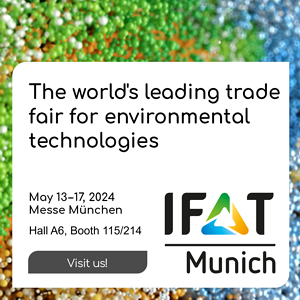China‘s Organic Waste Treatment: Still Facing Challenges
Since 2001 China began to install sanitary landfills in large and coastal cities, dumps were to be closed. From 2006 on, small and middle towns as well as developed counties got sanitary landfills and leachate treated plants.
The rural areas were neglected. The Five-Year-Plan for 2011 – 2015 defines the development of an circular economy as an important strategic renouncement including “encouragement of resource protection“ and “strong improvement of the circular economy“. Until the end of 2020, the most important cities are forced to realize a “separation rate“ of over 90 percent and a recycling and disposal rate of 35 percent including separately collected biologically degradable waste.
25 billion Euro to be invested
In 2015, the cities on the Chinese continent produced 191.4 million tons of municipal solid waste, of which 98 percent were treated “non-hazardous“. At the same time the nearly 1.600 counties collected 66.6 million tons and treated 71.6 percent. Non-hazardous treatment in China is the synonym for dumping and incineration. So in the last twelve years the number of landfills climbed from about 450 to 650, incineration plants increased from 50 to 225, while biological treatment plants seam to have halved. Nevertheless, the MSW generation in the megacities rose slightly during the last 15 years, the rural production partly decreased, whereas the waste generation in the municipalities increased distinctly. Anyway the number of controlled disposal sites more than doubled and the percentage of incineration plants in waste treatment grew from 3 percent to more than 30 percent.
In the Peoples Republic of China 890 municipal waste treatment plants in cities and 1,187 in counties were in operating state in 2015. 67 cities did not run a correct treatment plant. The average treatment facility’s capacity reached 500 tons per day at landfilling and 769 tons per day for incineration. The 30 biological treatment plants resort to 324 tons per day. For rural areas, the figures show a treatment rate of 30 percent in small towns and less than 10 percent in villages; the waste is mostly dumped. Enhancement of capacities to 360,000 tons per day for cities and 130,000 tons per day for counties are planned to reach an incineration rate for municipal waste by 50 and partly 60 percent. According to the figures, 192.4 billion Chines Renminbi Yuan (CNY) respectively approx. 25 billion Euro will be invested in municipal waste treatment plants until 2020. At the end of the 13th Five-Year-Plan, a total treatment capacity for organic waste of 40,000 tons per day – by investments of 13.6 billion Chines Renminbi Yuan (CNY; 1.76 billion Euro) – is requested in 2020.
New treatment strategy proposed
In metropolitan areas valuable materials as well as municipal waste are collected separately and disposed. But for the collection and treatment of residual waste in rural areas further action is required. Currently 32 percent of domestic waste in China is – due to a high biogenic and moisture content – unefficiently incinerated, while 68 percent of waste ends untreated in sanitary landfills causing emissions. A proposal for a new strategy by German RETech Partnership suggests the segregation of a 25 percent bio-waste for anaerobic digestion and/or composting, mostly ending in compost products. Small parts are mass loss and recovery of recyclables. The residual 75 percent mixed waste could be treated by incineration and mechanical-biologically, resulting predominantly in energy recovery and sanitary landfilling. The benefits of this system lie in the reduction of the biogenetic parts making incineration more efficient. The division of bio waste collection and mechanical-biological treatment reduces waste volumes for landfill and increases both material and energetic disposal. And finally the waste will be stabilized before landfilling and thus minimizes emissions.
Tuning between political and bureaucratic layers needed
The implementation of the system does not only need a detailled analysis of volume and composition of the local waste, as they differ in the contents of kitchen waste, water, recyclable material and hazardous ingredients. It also needs an excellent tuning between the different ministries of Environmental Protection, of Housing and Urban-Rural Development, of Industry and Information Technology, and of Agriculture and a distinct coordination of the bureaucratic layers of provinces, municipalities, prefectures, counties, townships and villages. And it depends on the cooperation of conventional and informal sectors. Collection, treatment and utilization of separately collected compost and digestate should be ruled by law and substituted by a ban on landfilling of untreated municipal waste. China already works on rules concerning the quality of the material including concentrations of pollutants and impurities as well as restrictions on yield quantity. The volumes currently collected are small, but their separate collection is logistically possible and has been practiced in the past.
In search of suitable procedures and locations
The use of biogenic waste from residual household waste is only possible to a very limited extent. This so-called compost-like-output should be examined for further use in and on soil or for sanitary landfilling as a stabilized organic fraction. Regulations are needed regarding the quality of the material and of their treatment plants. MBA technology might be the best by reason of flexibility and adaption to the specific local and judicial requirements. It is able to separate the material for either recycling or energy recovery or to render it inert. Below the line, the separate collection of waste connected with a landfill ban of untreated waste and energy-efficient recovery plants would be the basis for a sustainable waste management in China. Difficulties result from searching the most suitable treatment procedures and the most suitable location for appropriate plants. According to experts, numerous pilot projects of separate collection have been started. Composting of green waste is possible, and marketing possibilities are available. Sudden relief is needed for gathering the restaurant waste in China’s cities. Mechanical-biological treatment could be an option for decentralized solutions and a supplement of waste incineration plants.
The full article on “Disposal of biogenic waste fraction in RP China“ can be found in Waste-to-Resource 2017, ed. Matthias Kühle-Weidemeier, Katrin Büscher, Göttingen 2017, ISBN 978-3-7369-9533-8 or eISBN 978-3-7369-8533-9.
Photo: pixabay
GR 32017

